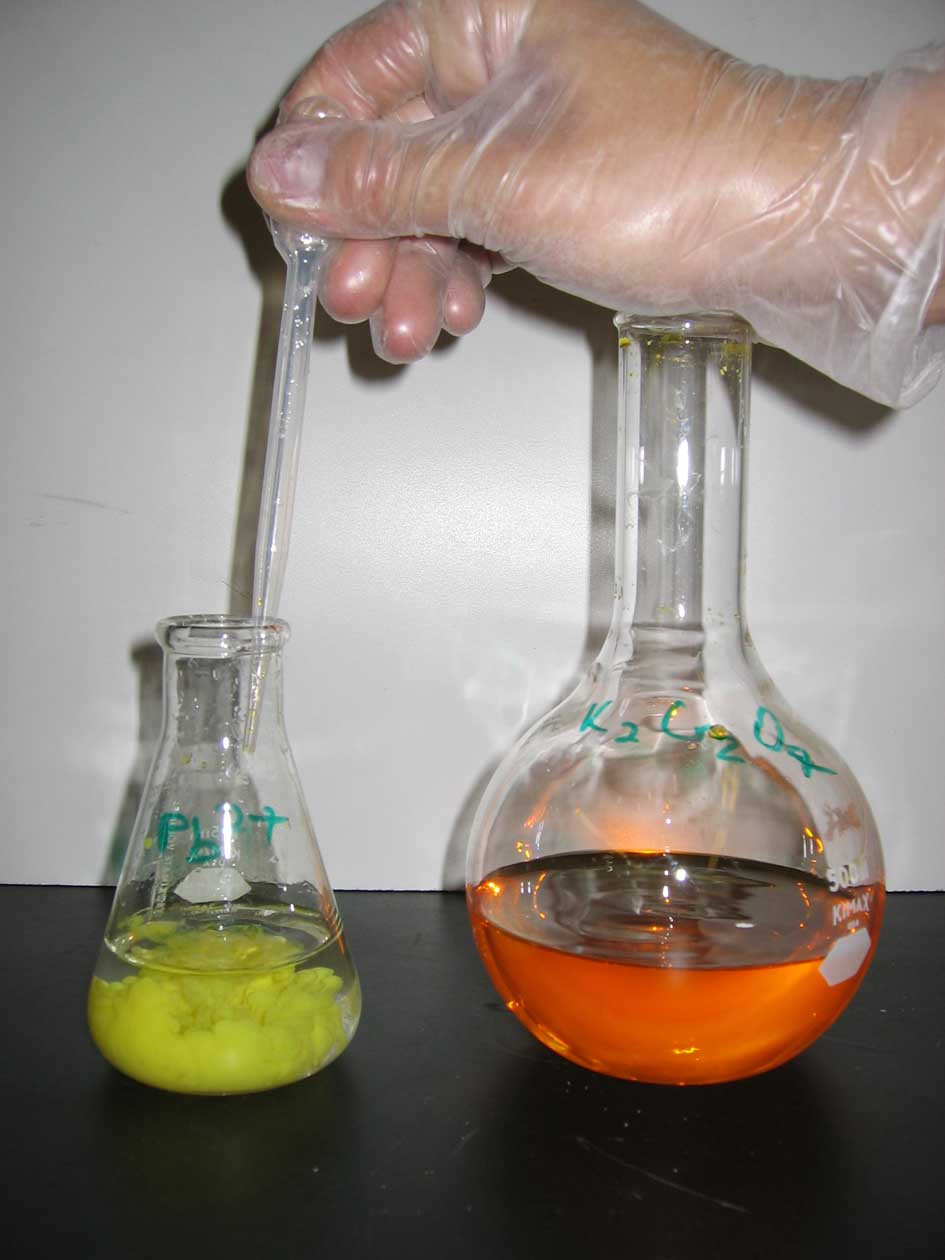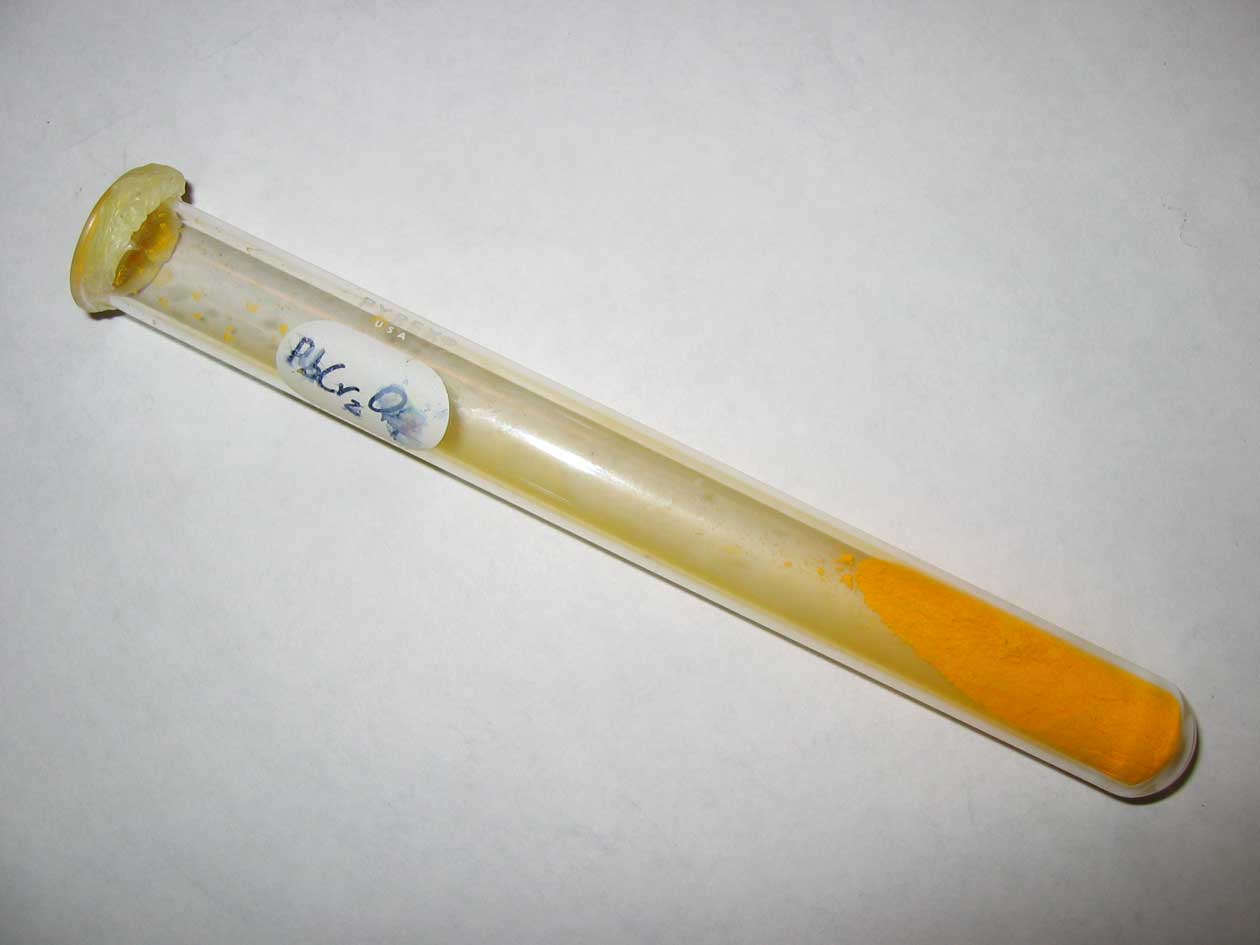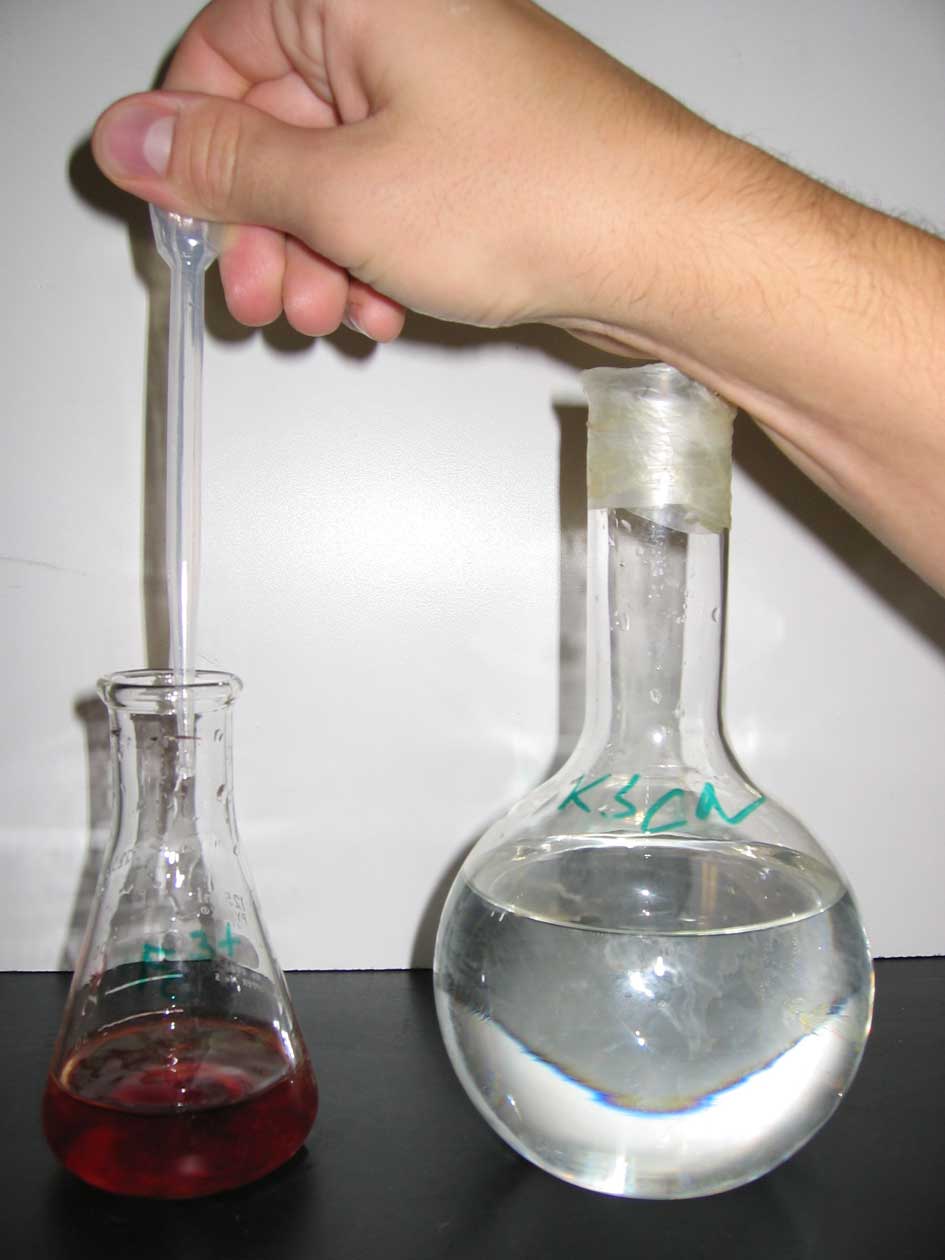 Solutions of soluble salts are prepared and mixed. Cations and anions combine to form a bright yellow precipitate.
Solutions of soluble salts are prepared and mixed. Cations and anions combine to form a bright yellow precipitate.
Ingredients: lead nitrate, potassium dichromate
Procedure: A complete recipe follows.
1. Prepare separate solutions of soluble potassium dichromate and lead nitrate salts.
2. Transfer a quantity of lead nitrate solution into an Erlenmeyer flask or test tube.
3. Add a few drops of potassium dichromate solution and observe the reaction.
Understanding: The soluble salts form colorless (lead nitrate) or lightly tinted (potassium dichromate) solutions. Mixing the two solutions leads to the dramatic formation of a bright yellow precipitate. What is the precipitate?
Consider the four ions initially in solution: nitrate, potassium, dichromate, and lead. There are six unique pairings of the four ions. Only two of the six pairings make sense, as we need to combine a positively charged cation (lead or potassium) with a negatively charged anion (dichromate or nitrate).
 We have tried one of those pairings (lead nitrate and potassium dichromate) and know that the result is soluble salts. The other pairing (lead dichromate and potassium nitrate) must lead to the precipitate. If you have some experience with salt peter (potassium nitrate), you know that it is soluble. It must be that lead dichromate is the bright yellow precipitate.
We have tried one of those pairings (lead nitrate and potassium dichromate) and know that the result is soluble salts. The other pairing (lead dichromate and potassium nitrate) must lead to the precipitate. If you have some experience with salt peter (potassium nitrate), you know that it is soluble. It must be that lead dichromate is the bright yellow precipitate.
The balanced equation for the reaction is
Pb(NO3)2(aq) + K2Cr2O7(aq) → 2 K+(aq) + 2 NO3-(aq) + PbCr2O7(s)
This reaction provides an excellent means of analyzing a sample for the presence of lead ion, a well known poison, through the addition of a small quantity of soluble dichromate salt.
 Solutions of soluble salts are prepared. Mixing the solutions leads to the startling formation of a "blood red" precipitate.
Solutions of soluble salts are prepared. Mixing the solutions leads to the startling formation of a "blood red" precipitate.